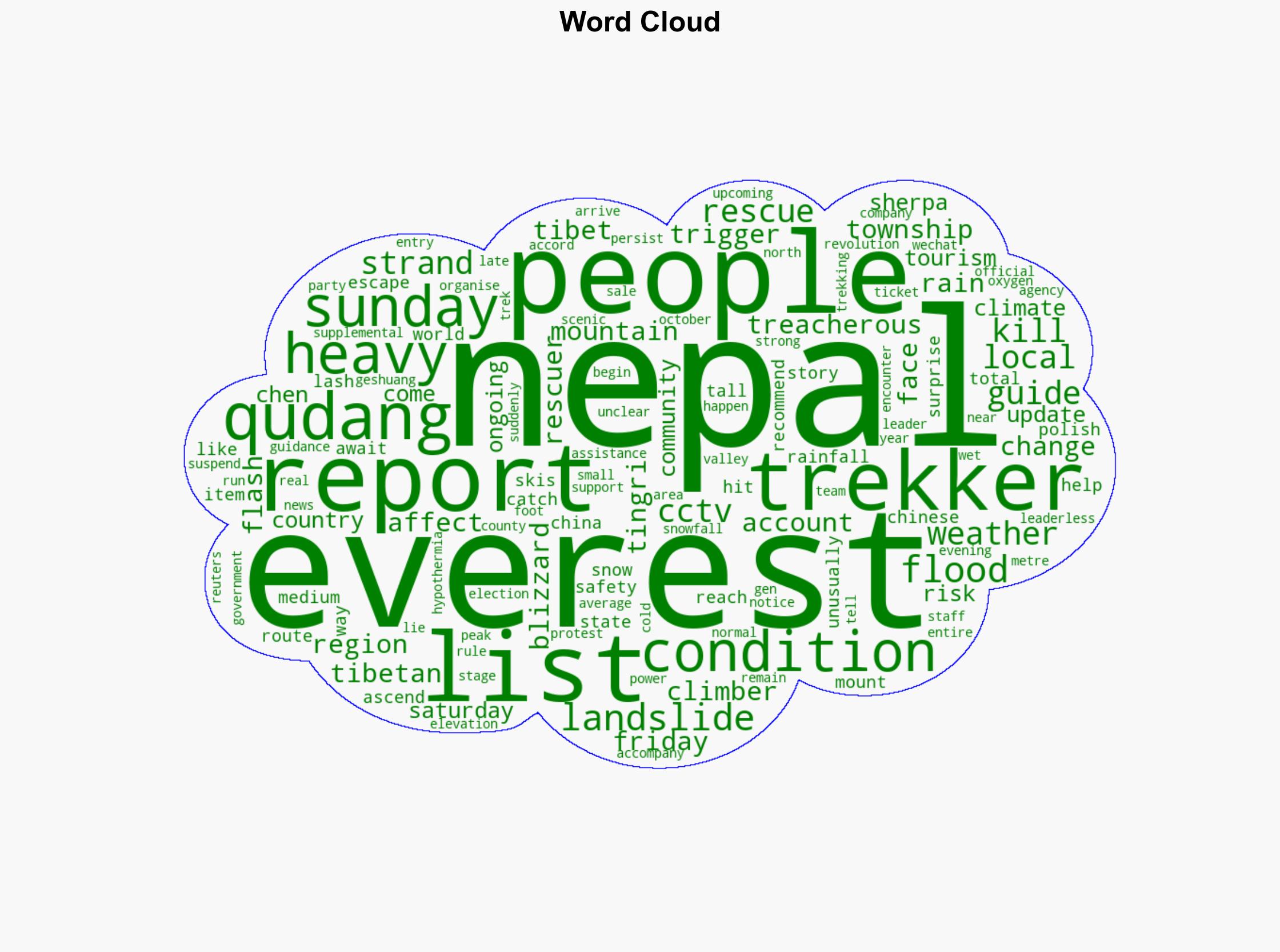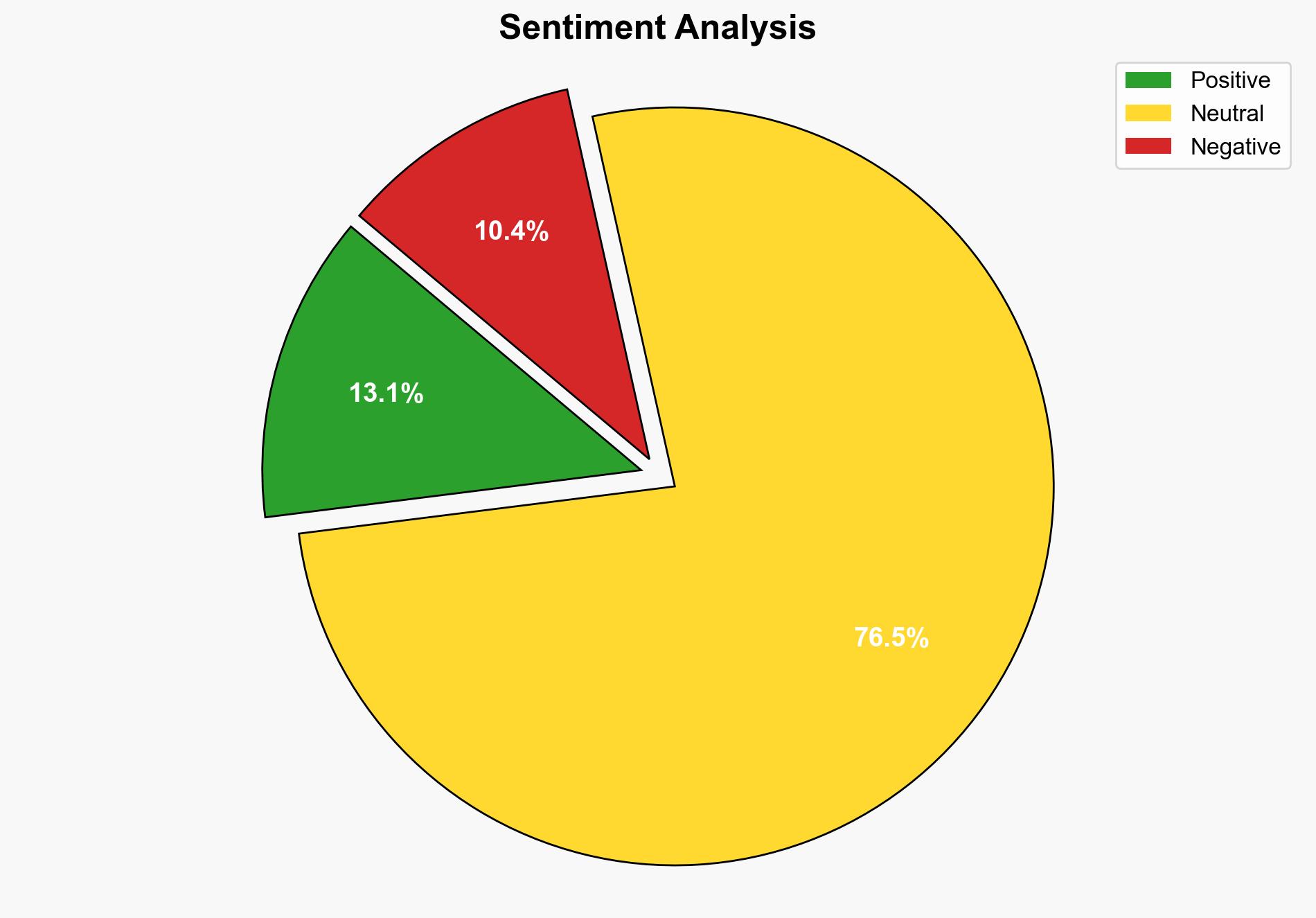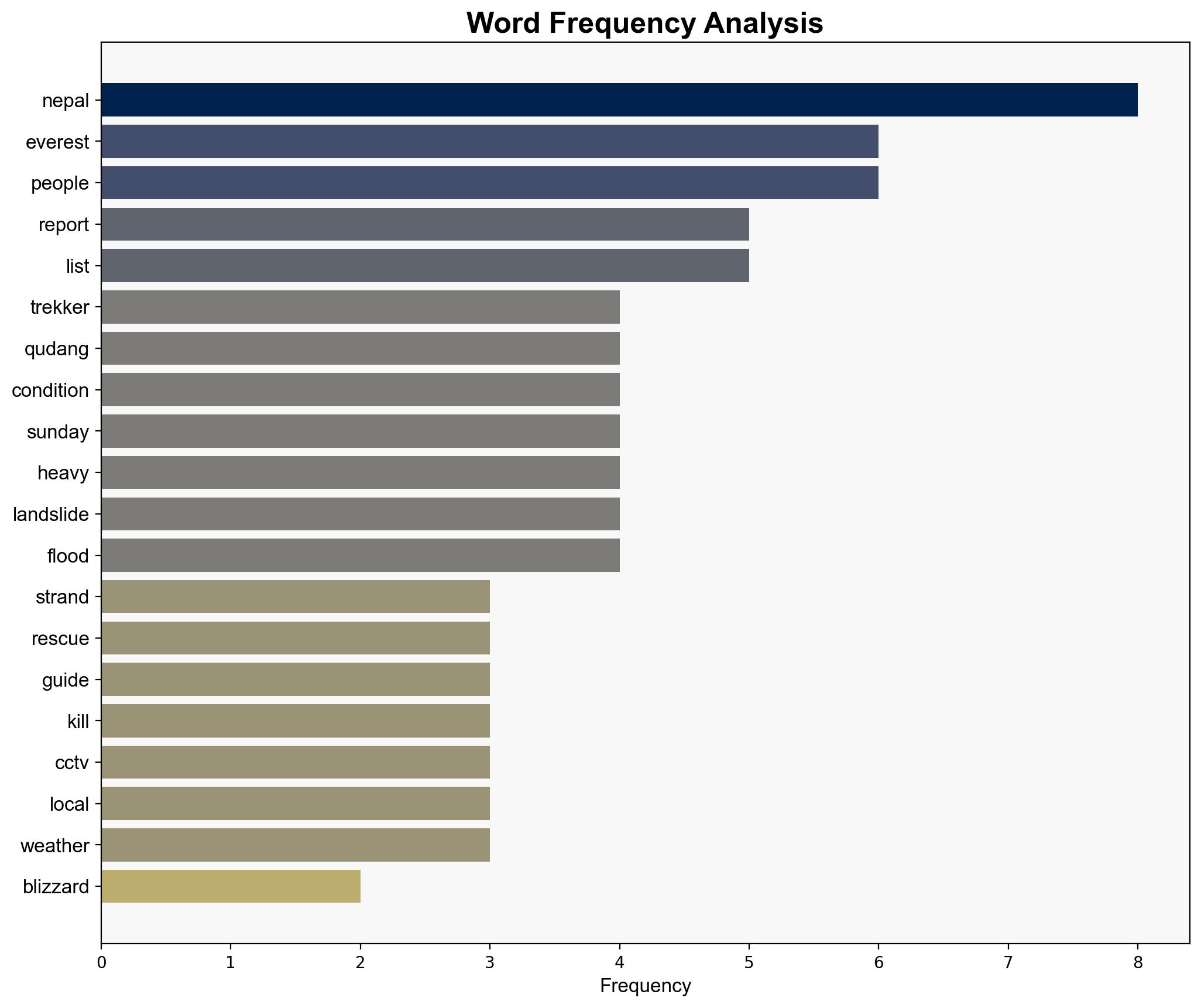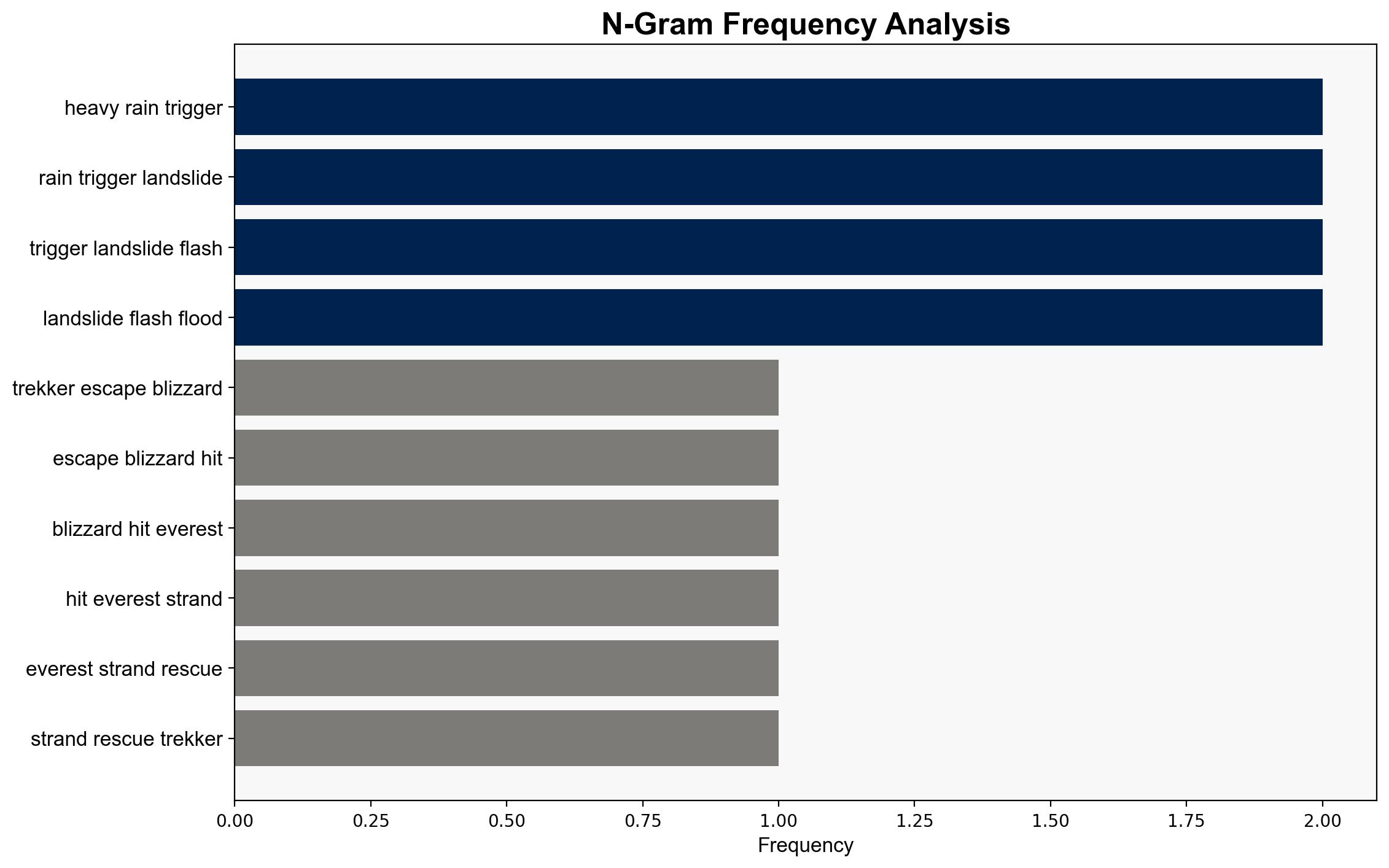More than 350 trekkers escape blizzard-hit Everest hundreds still stranded – Al Jazeera English
Published on: 2025-10-06
Intelligence Report: More than 350 trekkers escape blizzard-hit Everest hundreds still stranded – Al Jazeera English
1. BLUF (Bottom Line Up Front)
The most supported hypothesis is that the blizzard conditions on Everest are a result of increasingly unpredictable weather patterns due to climate change, posing significant risks to trekkers and local communities. Confidence level: High. Recommended action includes enhancing weather prediction capabilities and improving emergency response infrastructure in the region.
2. Competing Hypotheses
1. **Hypothesis A**: The blizzard conditions are an isolated weather event, not directly linked to broader climate change trends. This hypothesis suggests that the event was unexpected and not part of a larger pattern.
2. **Hypothesis B**: The blizzard is indicative of a broader trend of climate change-induced weather volatility in the Himalayas, increasing the frequency and severity of such events.
Using the Analysis of Competing Hypotheses (ACH) 2.0, Hypothesis B is better supported by the evidence, particularly the mention of increasingly unpredictable conditions and the impact on local communities, as reported by Chen Geshuang and others.
3. Key Assumptions and Red Flags
– **Assumptions**: Hypothesis A assumes that the blizzard is an isolated incident without considering the broader context of climate change. Hypothesis B assumes that climate change is the primary driver of weather volatility in the region.
– **Red Flags**: The lack of detailed meteorological data in the report is a significant gap. There is also potential bias in attributing the event solely to climate change without considering other meteorological factors.
– **Deception Indicators**: None identified, but reliance on state media reports could introduce bias.
4. Implications and Strategic Risks
– **Economic**: Increased weather volatility could deter tourism, impacting local economies reliant on trekking and climbing activities.
– **Geopolitical**: Strain on Nepal and China’s disaster response capabilities could lead to regional tensions if not managed collaboratively.
– **Psychological**: Heightened risk perception among potential trekkers could reduce tourism demand.
– **Cascading Threats**: Potential for increased natural disasters in the region, leading to humanitarian crises.
5. Recommendations and Outlook
- Enhance regional cooperation between Nepal and China for disaster preparedness and response.
- Invest in advanced weather prediction technologies to provide timely warnings.
- Develop comprehensive emergency response plans tailored to high-altitude environments.
- Scenario Projections:
- **Best Case**: Improved infrastructure and cooperation mitigate risks, maintaining tourism levels.
- **Worst Case**: Continued weather volatility leads to repeated disasters, severely impacting local economies.
- **Most Likely**: Incremental improvements in response capabilities, but ongoing challenges due to climate change.
6. Key Individuals and Entities
– Chen Geshuang (mentioned in the context of weather conditions and trekking team experiences).
– Local government and tourism authorities in Tingri County.
7. Thematic Tags
national security threats, climate change, disaster response, regional cooperation




